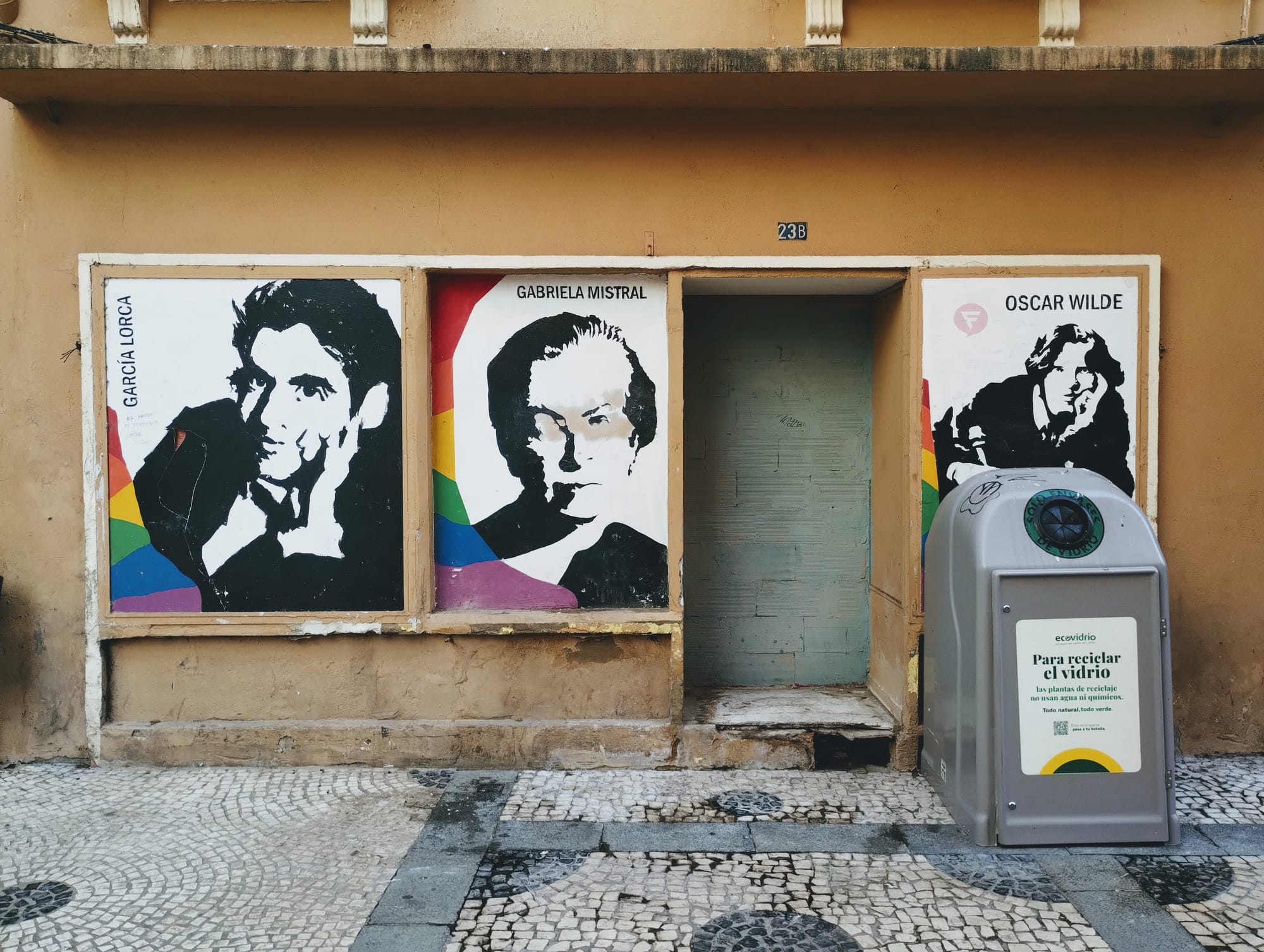Iberian return, day three: Badajoz - Porto
No cathedral for you today.
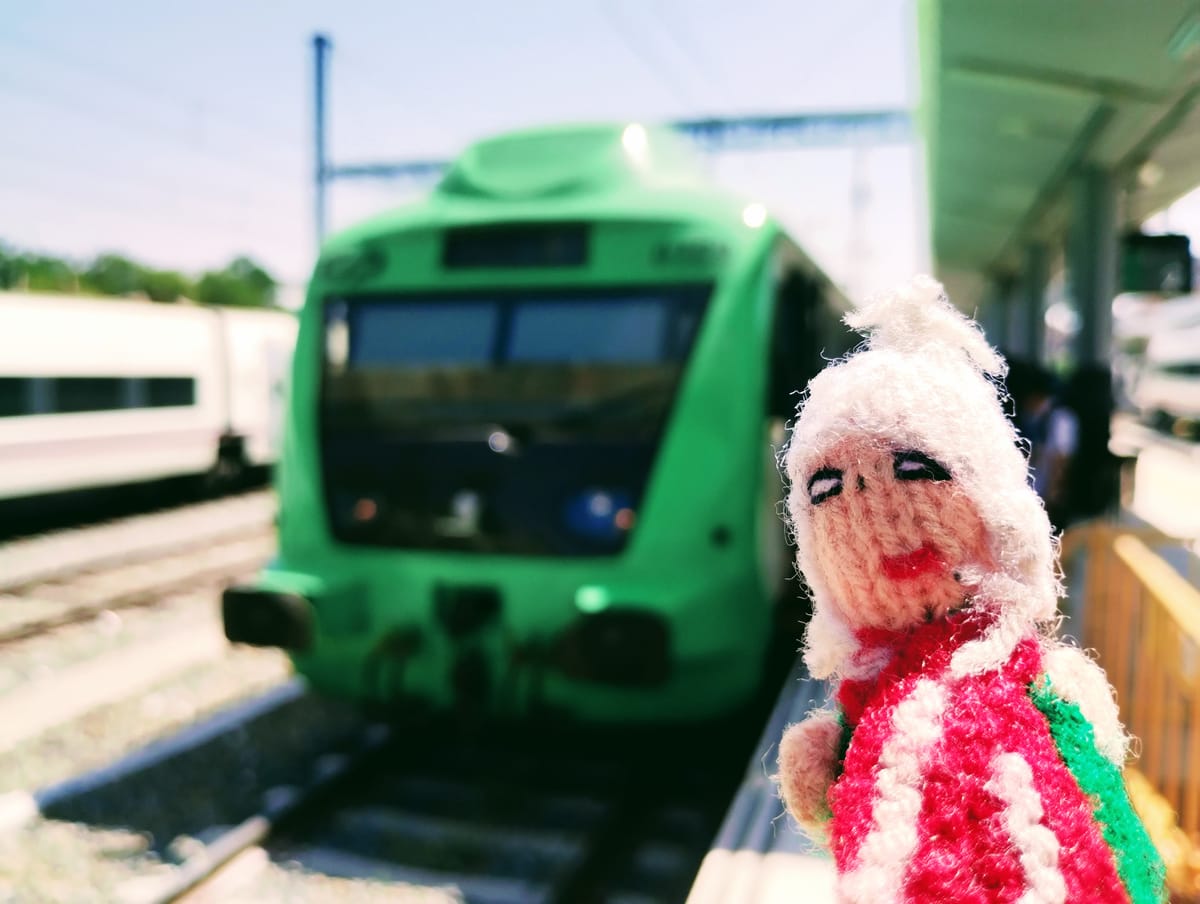
I decided last night that any tourism was best tackled this morning, before Badajoz got too hot.
At ten o'clock I set off looking for breakfast – Spanish toasty things with tomato and cheese served with a coffee – and was then ready for the first thing on my list of the day: visit the Cathedral. Badajoz was gloriously cool, and it was a pleasure to be out and about. The locals seemed to agree and it was a stark contrast to yesterday, which was mostly quiet.
There's a sign in the cathedral that states clearly that visits are not possible while mass is in progress which, it transpires, is all the bloody time. I tried again, and failed – not harassed by floating nuns this time – so I escaped the heat of the cathedral and went out to look at the bits of Badajoz I'd rushed past yesterday, notably the murals of various celebs around the bottom of the citadel.
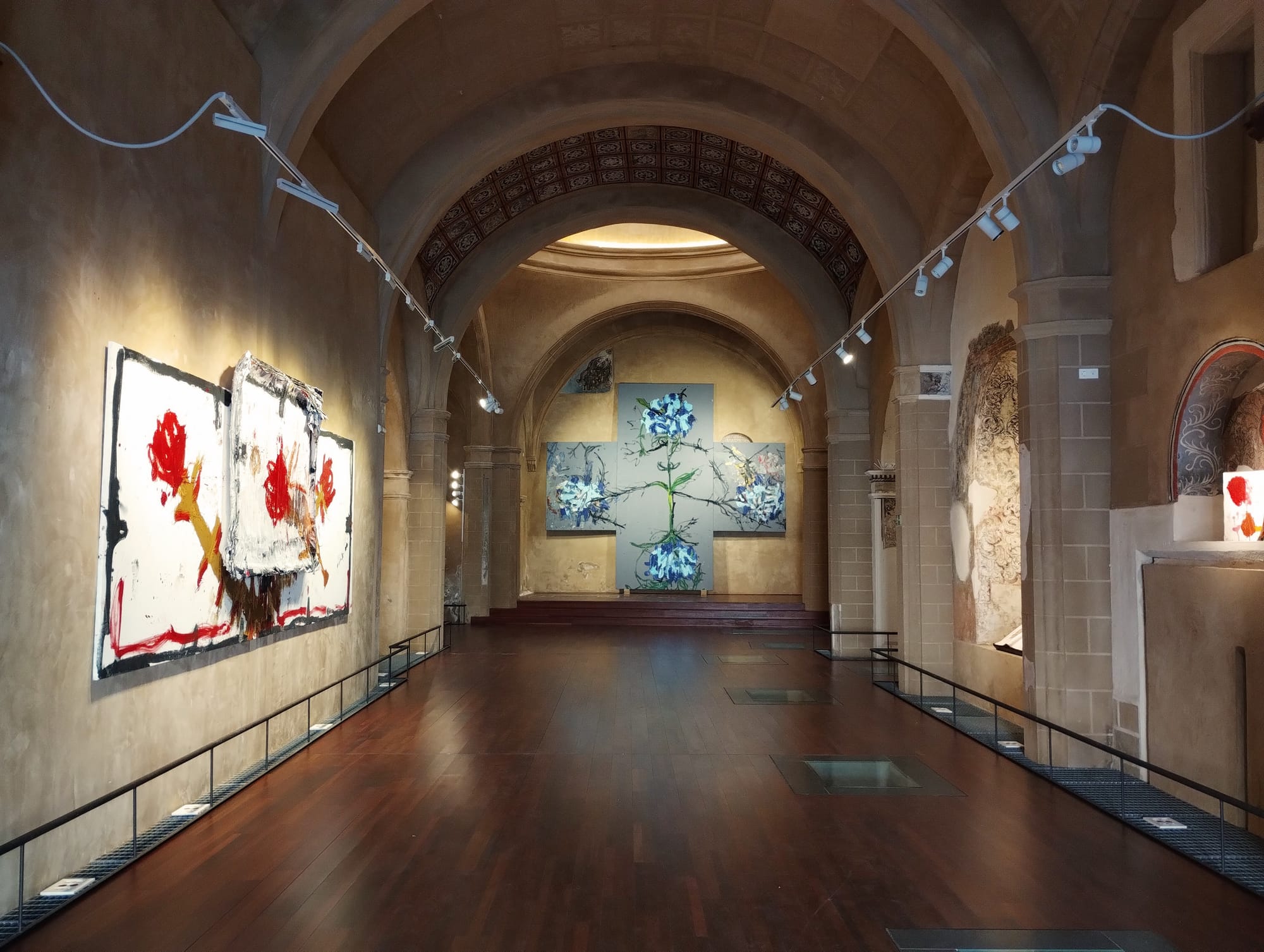
There I thought I'd found a bonus church, that of Santa Catalina. First occupied by the Carmelite nuns of Santa Catalina, the convent changed hands many times until the Confiscation of 1837, at which point it became private property. After stints as a tile factory and a building materials depot, it passed into council ownership in 2013 and now hosts art exhibitions way above my street-art grade. Among the many original elements remaining, there are glass sections of floor through which original stone foundations can be seen.
Back in the square, I was certain that mass must have finished, but was slightly surprised to find the cathedral now locked, perhaps so the hovernuns could return to their alcoves and recharge before evensong, like sinister ecclesiastical Roombas.
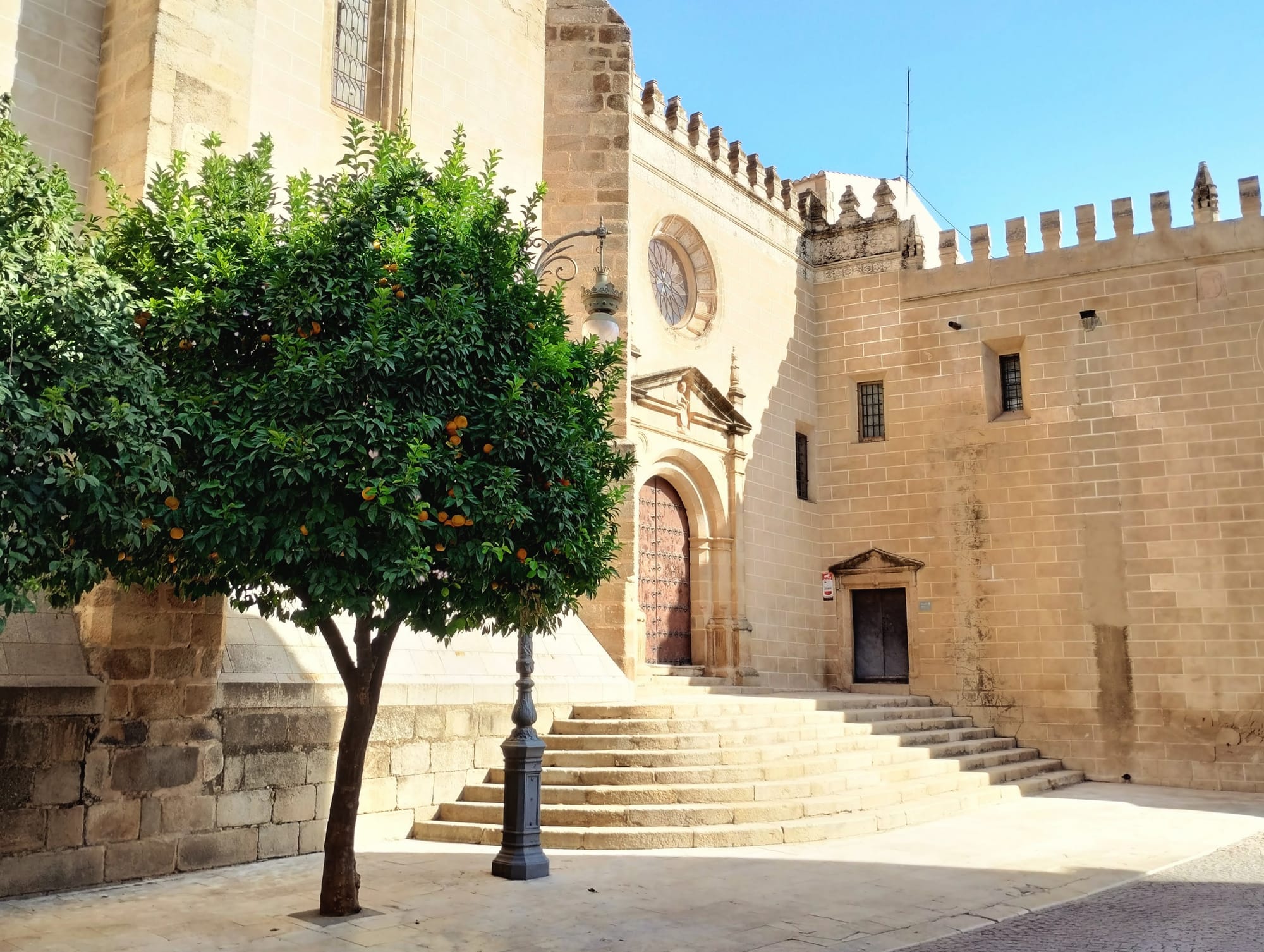
I walked around the outside of the cathedral in vain, looking to see if there was a transept door that would let me in because I was intrigued by the construction, but, alas, it was not to be. This is a shame, because pictures on the Interwebs suggest an utterly stunning enclosed wooden choir that I'd have enjoyed poking at. Meanwhile, in the Plaza España, on benches in the shade and under awnings outside bars, pacenses were going about their bustly business doing normal Monday morning things.
I decided to investigate the murals again on the rather rainbowy Calle San Juan Batista. Oscar Wilde was not who I expected to find hiding behind a recycling bin. Perhaps that’s why he’s looking a tiny bit sulky. The last time I was in Paris for something cultural, I went to visit him in Père Lachaise Cemetery, where his memorial is now covered with glass to protect it from being eroded by the thousands upon thousands of kisses bestowed upon its porous surface by adoring fans. The visitors today cover the glass with their expressions of affection.
When he died in misery, poverty, pain, exile and disgrace at the age of 46 he could never have guessed what his tomb would become, or that someone would randomly stencil him onto a wall in a Spanish border city, and then place a bottle bank in front of him.
Check-out at my lovely hotel was at midday, so I was back around eleven for a quick shower in my massive bathroom. My bathroom was equipped for those with reduced mobility, and when the shower was attached to the support above the shower chair was turned on full blast, the pressure immediately kicked the shower head up against the wall and directed the water onto a mains socket on the opposite wall. Finding Oscar behind a bin was surprising, but not as surprising as discovering that I'd been upgraded to the Claude François memorial suite at the Hotel Condedu. Still. It would've been invigorating.
As I started my trudge to the station, the cathedral bells struck midday. A tinny, clanky, chime, as if someone had left the carillon cassette in the car on a hot day to remind me spitefully I'd not been inside.
The road to the Estación de Badajoz is paved with bad intentions, all of them serving beer with nibbly things at midday as drivers navigated the roundabout, jovially checking their horns were working and waving polite greetings to each other. After two breakfast beers, I found myself in a brocante – I didn't need anything but was somehow powerless to resist – and then, a slow mosey later was installed outside the bar at the station waiting for my final beer of the day. No sooner had I practised my new exciting Spanish – ¿es possible comer algo vegetariano, por favor? – than the lovely man brought me a beer with a complimentary bowl of chips and some chicken wings.
Of course I ate them. They'd have gone in the bin otherwise.
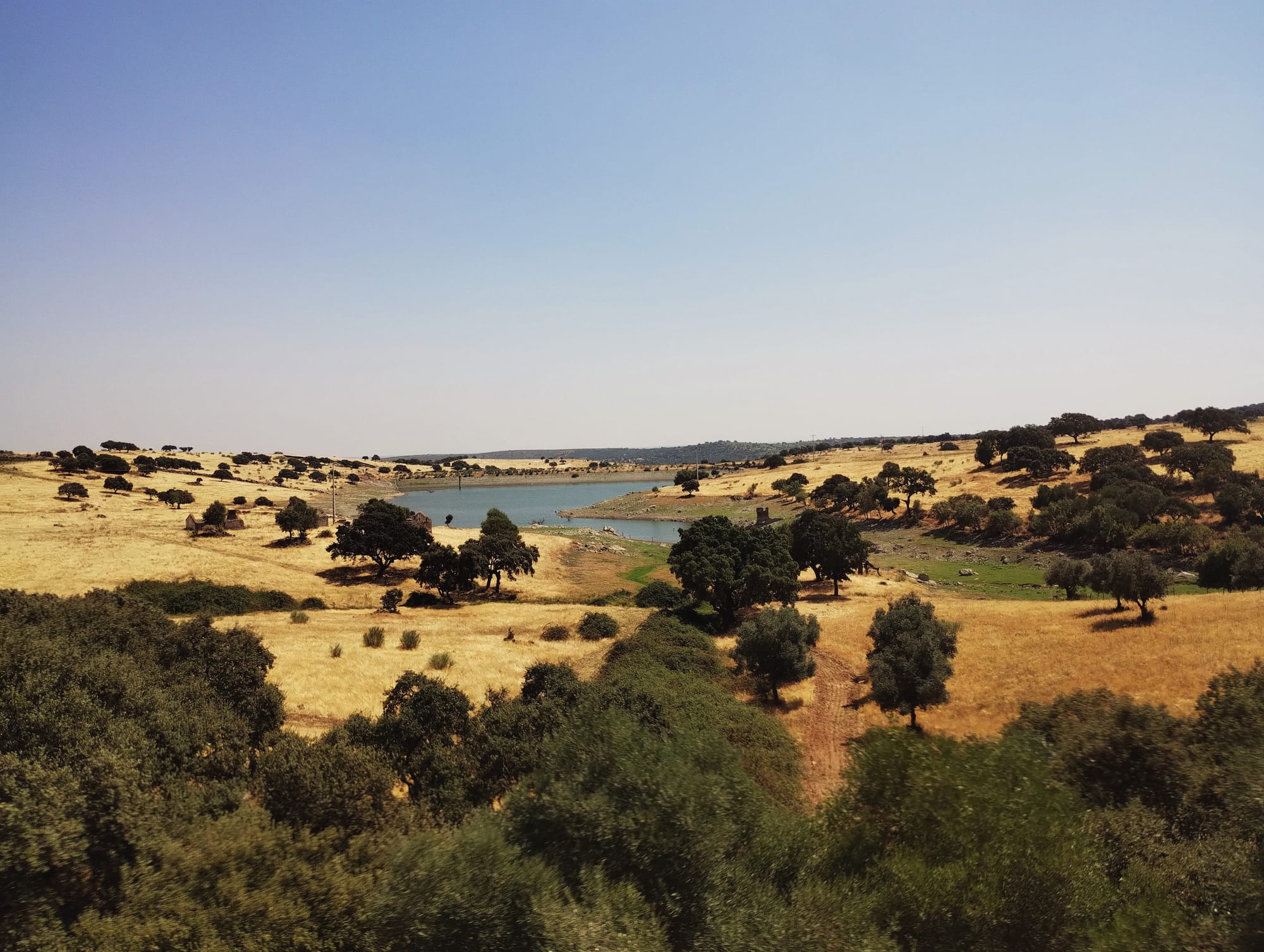
The 14:09 Comboios de Portugal Raiono service to Entroncamento was a delightfully clattery experience, a green one-coach diesel affair, essentially a bus on rails, built in 1955 with air-conditioning that was still doing its best. I counted roughly 80 seats and by the time we were into deepest Portugal, rattling energetically through the cork oak landscape of the Alto Alentejo, most of them were occupied.
My needless bouncing from side to side helped start a conversation with two girls from Germany Interrailing their way to Lisbon, from where they'd (eventually) take a train to the Algave, onto Sevilla, then whoosh back to Germany via Montpellier. Not even a screaming baby – Noodles, it had lungs on it – could detract from my enjoyment, and as we rattled further into Portugal, we jostled into ochre, white, and blue-coloured stations, all seemingly abandoned save for a solitary member of staff dutifully guarding the platforms and helping the occasional passenger into our steed. As we progressed, our driver tootled amicably at all sorts of potential obstacles crossing at the slightly alarming level crossings.
Our train manager's surname was Jerónimo, which endeared him to me immediately – a sentiment vindicated when he agreed to let me poke my head into the cab and take a photo. It was not an ICE experience, but what it lacked in leather seats and restaurant cars it made up for in sheer white-knuckle excitement.
We never exceeded 90 kph, and even that was short-lived.
The journey was an hour longer than I expected, because of course we'd quietly changed into GMT+1 at Elvas. By the time we reached Abrantes, the first "big" station along the route, the air conditioning was starting to struggle and it became a more challenging final stretch. I sat on the left for the journey, and think the other side of the train would've been the better option, view-wise. It was all gorgeous, of course, and in the final half hour before Entroncamento we passed Almourol Castle, which was on the left.
We arrived more or less on time in Entroncamento where I spent the time before the Intercity service to Porto feasting on a goat's cheese and spinach thing with a cute Super Bock "mini", purchased with the help of an English-speaking lady and some hand gestures, my Portuguese is even more pitiful than my Spanish. The café was wonderful, with its deliciously brown walls and tiled relief representation of a steam locomotive on the end wall under a TV showing rolling news.
On the train to Porto, I was quite sleepy, and slipped in and out of beery snoozes. I'd reserved, with the help of a lovely person at CP via email, seat 11 in coach 81, which put me right next to an enormous window which was both tinted and dirty. The effect of this was to convince me that it was cold. When our tickets were checked, the train manager greeted me by name! Am I on a list, or are trains in Portugal really civilised?
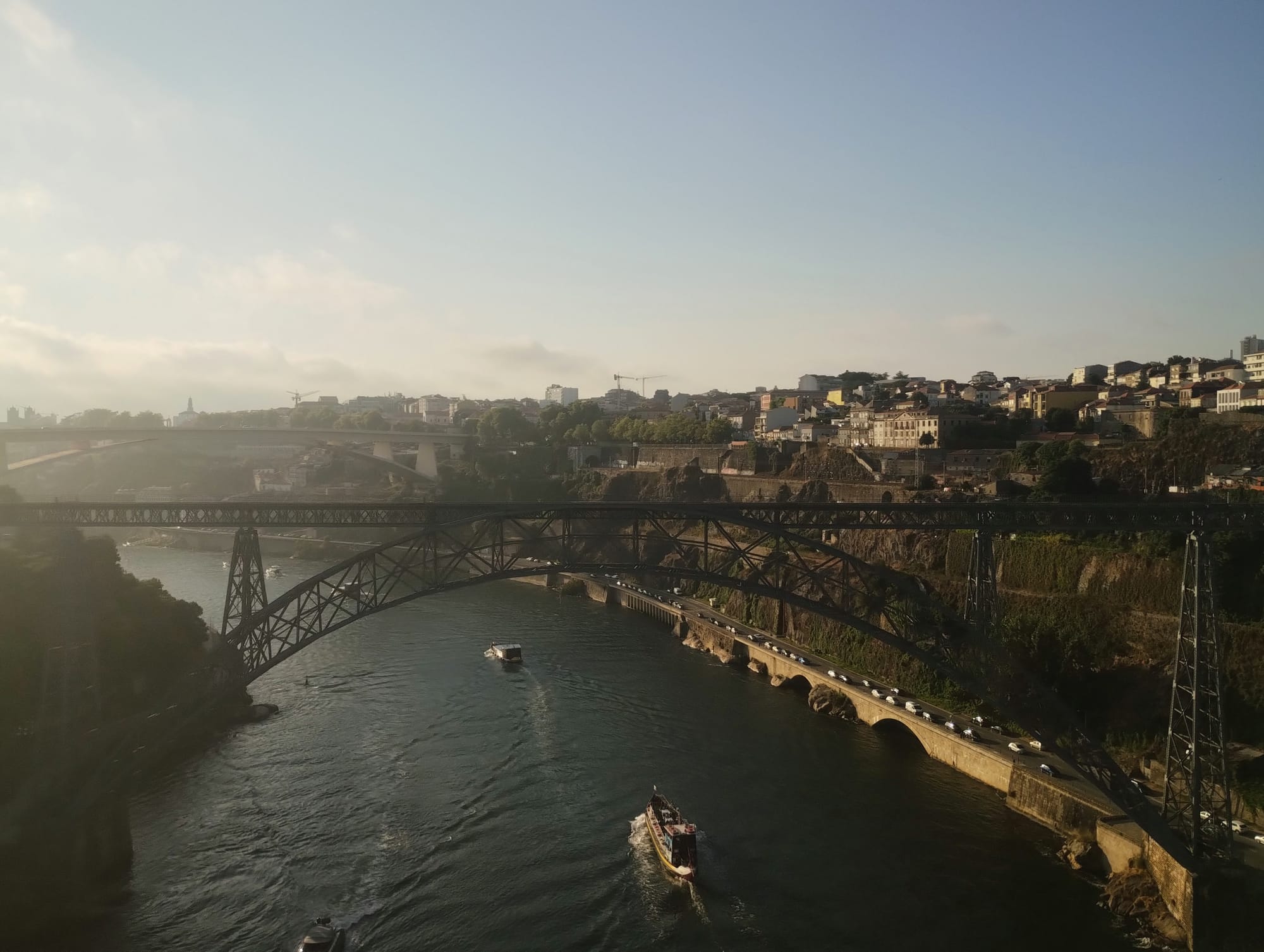
At the end of the train there was no locomotive – the Aymara would love it – and as we approached Porto I realised the upper part of my window was not tinted and so managed a couple of scenery photos. In the dining car, the card machine wasn't working, and my attempts to secure a final beer were thwarted at the last hurdle.
In Porto Campanhã I helped a German tourist navigate the machines to get a ticket for the commuter service to Port São Bento. I have seen photographs of this station before but had completely forgotten about its status as Portugal's Catedral dos Comboios until I walked from the platform into the waiting area. It wasn't possible to gawp at the magnificent vestibule in all its tiled and murally glory, as trains had just spewed forth many people into the station who were all trying to navigate their respective ways around the groups of Spanish tourists who were being given tours of the station.
I walked from São Bento – patron saint of Japanese lunchboxes – to my hostel, which I had (once again) booked from the train. Once checked in, I had an exploratory walk around, found some falafels, enjoyed the free sangria provided at 9pm, and called it a day.
